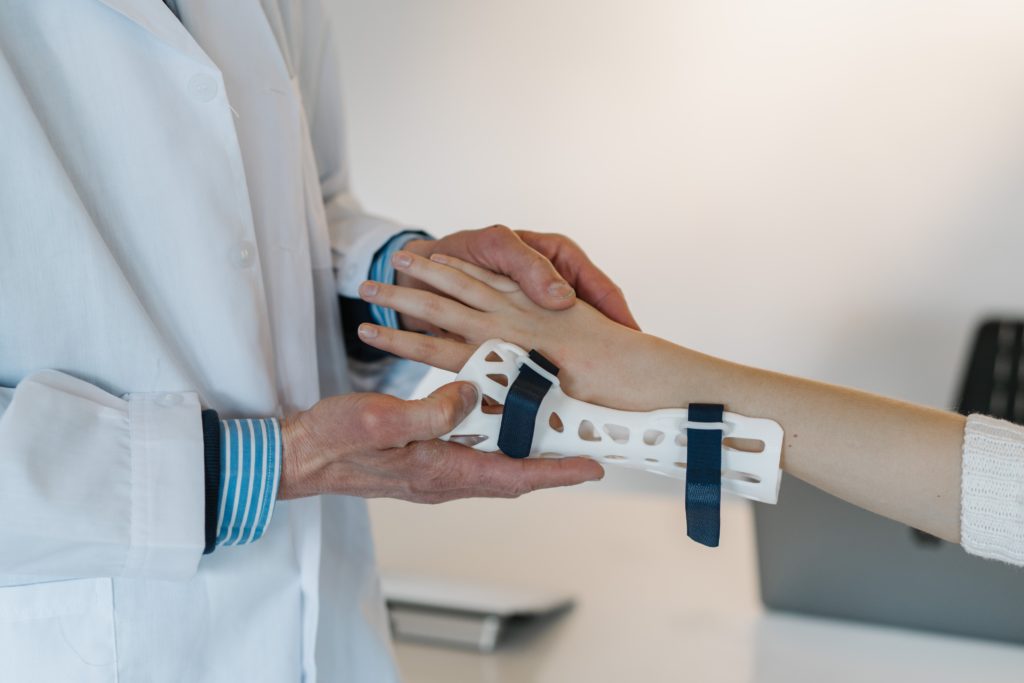
One of the most common questions I receive from patients is related to the management and care of their cast or splint. Given the fact that one may have to live with a cast or splint for four to six weeks (sometimes less, sometimes more), many people have concerns about hygiene, swelling, pain and function while wearing a cast…
Casts or splints are used to support and protect bones and soft tissues after injury or surgery. A broken bone or severe ankle sprains are two good examples. Consequently, the immobilization provided by a cast or splint protects the injury, allows healing with proper alignment, and reduces pain, swelling and muscle spasm.
Casts, half- casts or splints are made of plaster or fiberglass. A doctor or assistant individually makes them for each person and injury. In addition, custom-made splints are often made by occupational therapists for the hand or physical therapists and certified prosthetists for other body parts such as the trunk or limps. Fiberglass splints are made with Velcro straps and are removable, which could be used for the wrist for carpal tunnel or the foot for ankle sprains.
Both plaster and fiberglass come in rolls, while fiberglass comes in different colors, which are dipped in water and wrapped around the injured part. It is often necessary to apply the cast to the joint above and below the injury. Then, the material will dry and harden in minutes. The cast must fit the shape of the injured part snuggly, but comfortably. If a cast is applied to a new injury or immediately after surgery, the cast will be too big once the swelling subsides. At this point, a new cast is applied. Padding is used under the cast to protect the skin. Sometimes special padding can be used under fiberglass to allow the cast to get wet in the shower or pool.
Most fractures or severe sprains require 4-6 weeks of casting, sometimes less, sometimes more. Often, once the cast is removed, a removable half-cast or splint is applied. This allows the injured part to be washed and exercised several times a day without the splint and then reapplied.
The American Academy of Orthopedic Surgeons offers the following recommendations for cast care and warning signs of cast problems:
Warning signs: if the above recommendations fail to provide a reduction in swelling or pain or if you have the following warning signs, contact you doctor:
Visit your doctor regularly and listen to your body. Keep moving, eat healthy foods, and exercise regularly.

NEXT MONDAY – Read Dr. Paul J. Mackarey “Health & Exercise Forum!”
This article is not intended as a substitute for medical treatment. If you have questions related to your medical condition, please contact your family physician. For further inquires related to this topic email: drpmackarey@msn.com
Paul J. Mackarey PT, DHSc, OCS is a Doctor in Health Sciences specializing in orthopaedic and sports physical therapy. Dr. Mackarey is in private practice and is an associate professor of clinical medicine at GCSOM.
Access all of Dr. Mackarey's articles in our Health Care Forum!